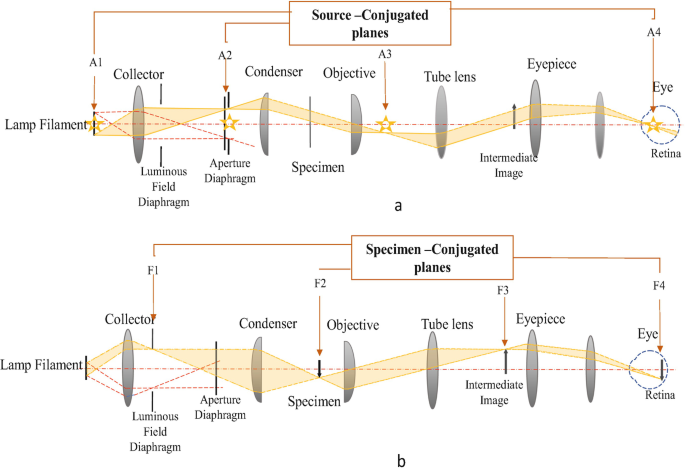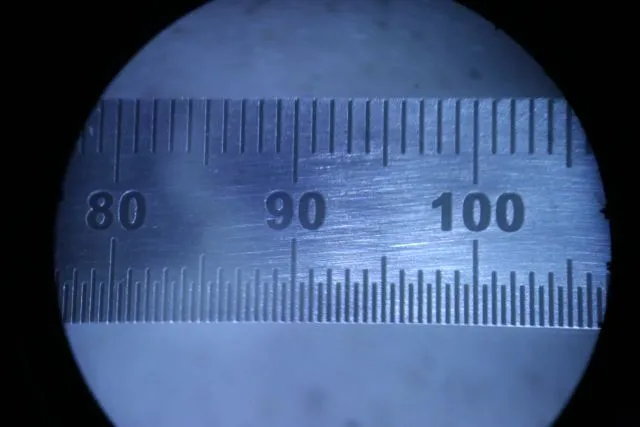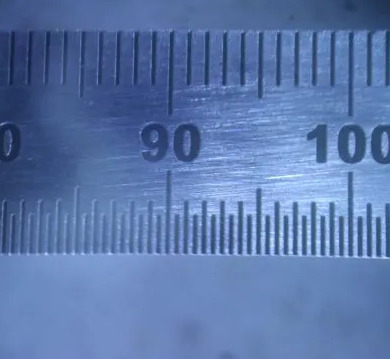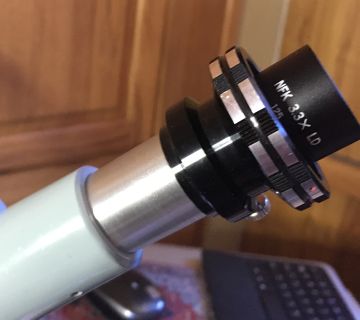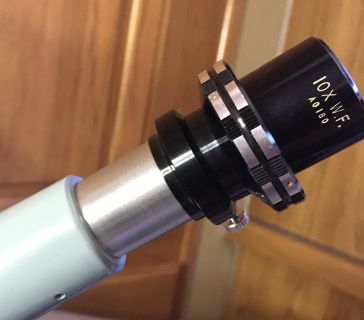back
attaching cameras to microscopes
Camera + Microscope Combinations
Attaching finite microscope objectives directly to camera bodies is generally considered macro photography, mostly addressed elsewhere by others.
Attaching a camera body to a microscope with only air between finite objective and sensor This is called episcopic (contrasted to diascopic) with illumination accomplished either by external illumination sources or using so-called vertical illumination built into microscopes, where light may be directed down thru objectives, e.g. using prisms or other partial mirrors and called brightfield, or coaxially around objectives, called darkfield illumination. Typical (diascopic biological) microscopes can used external illumination for opaque microscopy, Live View, focus bracketing, AbbeUsing a digital camera with zoomed Live View eases focusing.Beyond convenience, best viewfinder focus with DSLR mirror down may differ that on sensor. Silent shutter (Canon's mode 2) and remote shutter release minimize vibration during exposures. Replacing halogen illumination with blue LEDs should improve image resolution; Raleigh's criterion has Abbe diffraction limit depend on illumination wavelength and Numerical Aperture (N.A.). Practically, blue LEDs not only have shorter wavelengths than do red and green; excluding longer wavelengths also usefully reduces chromatic aberration effects. However, blue sensors are relatively sparse in digital cameras; higher sensor resolution compensates. Used Canon APS-C bodies with Live View and silent shutter (e.g. 50D) can be less than $100. Free Magic Lantern firmware adds other considerations For popular Olympus finite microscopes (e.g. BH2), matching relay lens is wanted for objective aberration corrections, then DSLR is satisfactory. If direct projection (without relay lens) is wanted for most infinity (excepting e.g. Leica and Zeiss) and e.g. Nikon CF finite objectives, DSLR (e.g. T3i) greater flange-to-sensor distance cannot be parfocal on many trinocular heads. Used Canon EOS-M series camera bodies with > 20mp sensors can be < US$200. Canon's tether utility is IMO more useful than those of other manufacturers. Few Canon EF-M models offer focus stacking, applicable for afocal configurations with a supported autofocus lens. Some (more modern) EOS RF bodies are now available used for < US$400, but I lack experience with them. Sony mirrorless bodies can more often be powered by USB than can Canon; Sony full-frame bodies typically have built-in APS-C crop mode, unlike Canon, but Sony's slightly larger than Canon APS-C sensor size is more liable to corner vignetting. Eye tube SLR camera adapter clampsTraditional eyepiece tubes have about 25mm o.d.,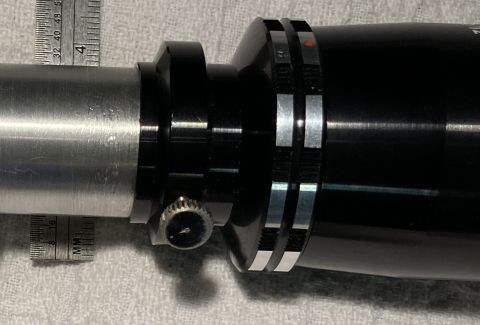 ... for which T-mount adapters were made. Common brands were Kalt, Aetna and Telestar, but many identical or similar clamps were branded for cameras. 
Ocular SwapSwapping between regular eyepiece and camera is fairly quick and easy:
For larger o.d. eyepiece tubes, up to 1.25" (less than 32mm), a 1.25-inch telescope clamp can work, e.g. here on a Cycloptic: 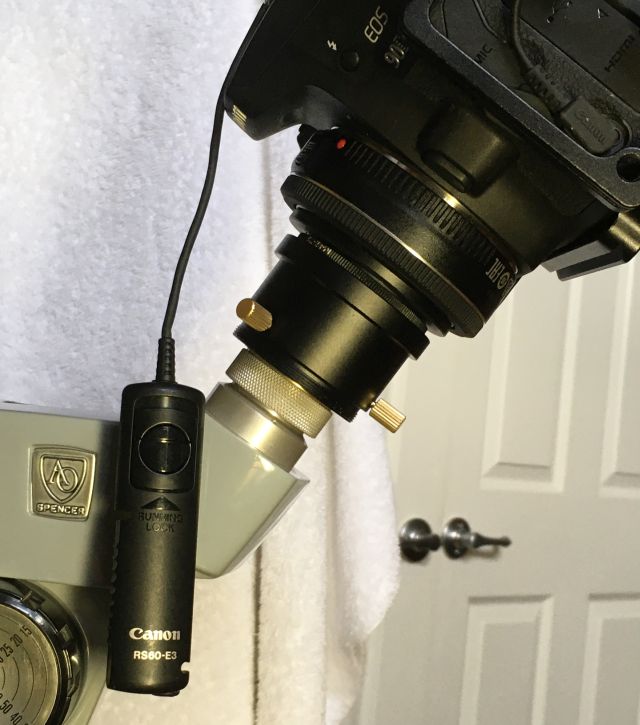 AO eyepiece with afocal Canon 40mm pancake f/2.8 STM 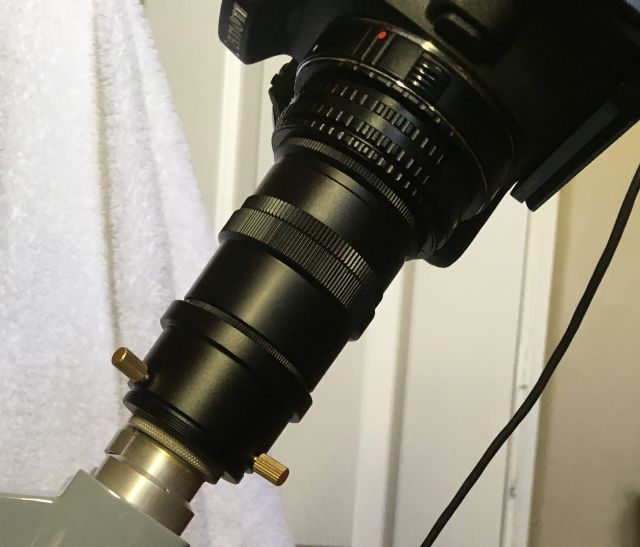 instead of eyepiece, photo relay, extension tubes and helicoid to focus projection on camera sensor ... perhaps with shims to fill gap between eye tube o.d. and clamp i.d.: Eye tube adapters with typical T2 or M42 threads require camera-specific adapters. A projection ocular and extension tubes should cost less than $100; monocular microscope heads typically cost much less than trinoculars, while having less light loss than binocular heads, and used eye tube camera adapter clamps go for around $15. Good complete used microscope with epi illumination and bright/darkfield objectives can be spendy. Starting from scratch, consider Nikon 210mm B/D objectives in an Optiphot 66; many were used for semiconductor electronics wafer inspection... M42 to 30mm to 23.2mm eyepiece adapter
| |||||
|
maintained by blekenbleu |
